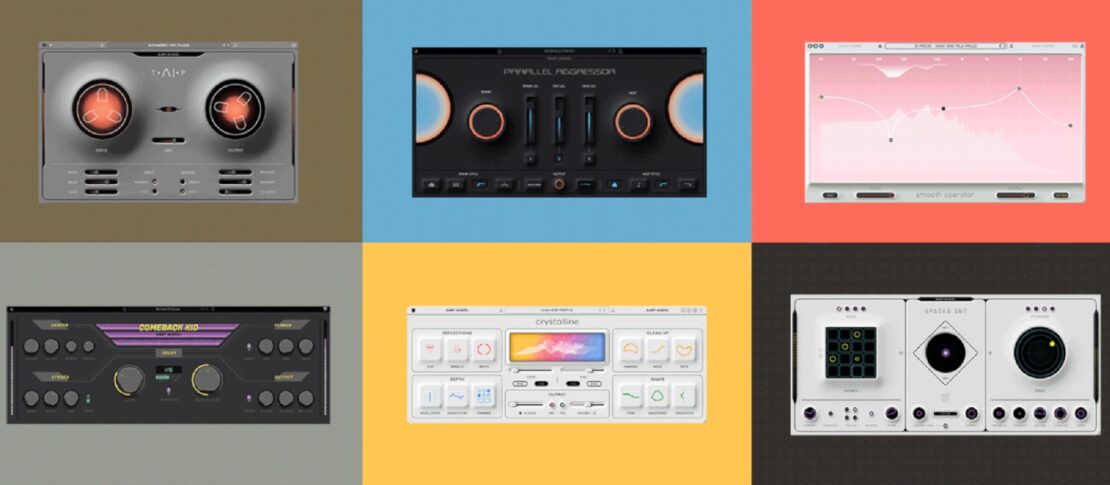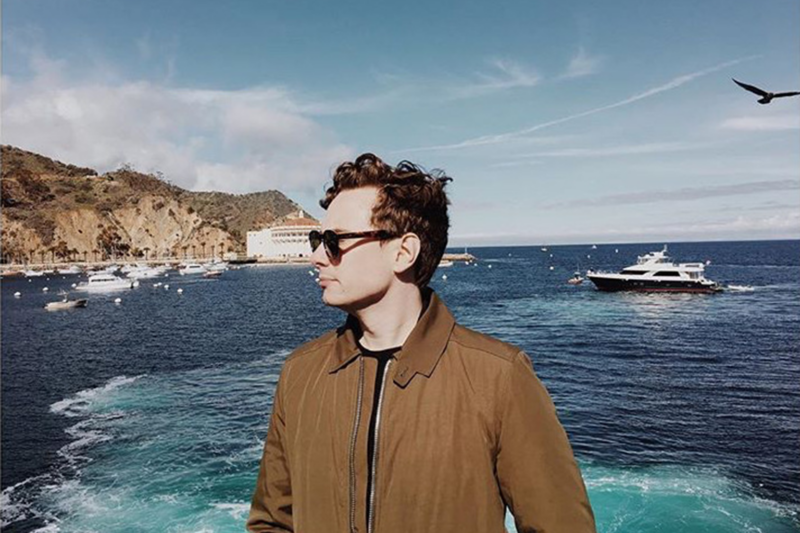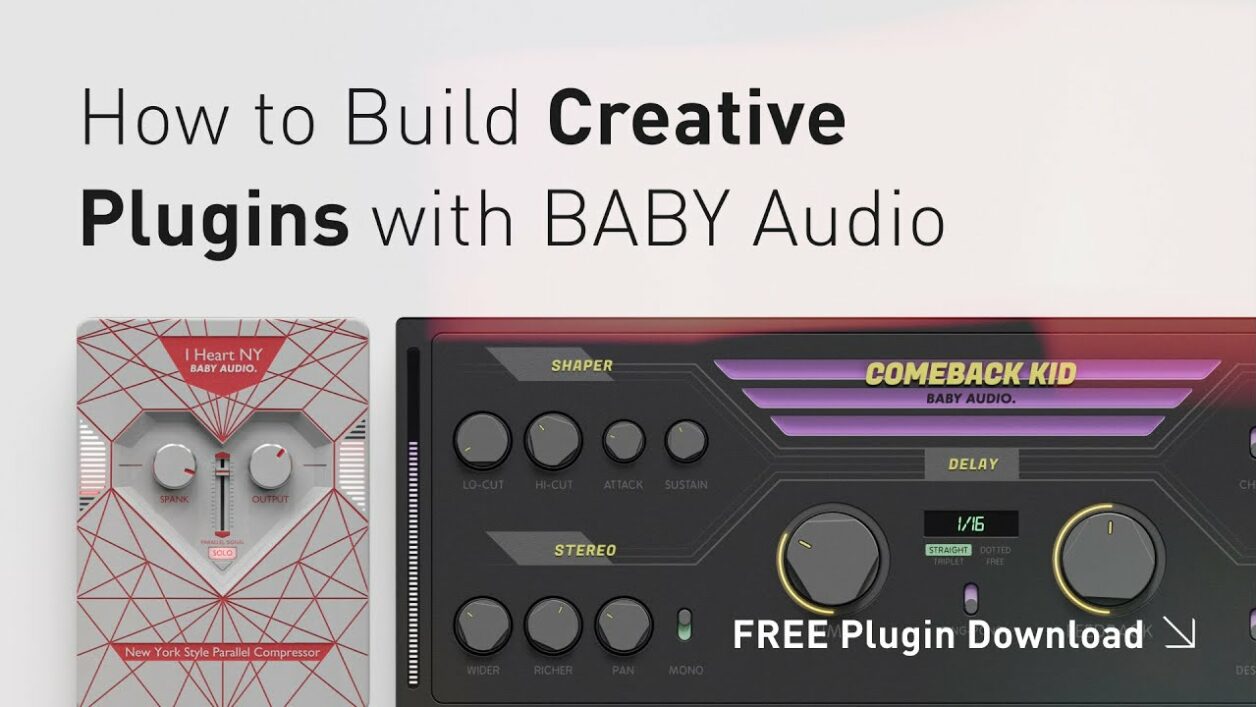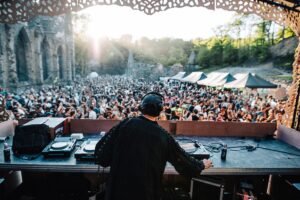
Interview with Caspar Bock [Baby Audio]
For this interview, we had the pleasure of talking to Caspar Bock of BABY Audio, a leader in the creation of creative plugins and tools for the modern studio. We touch on different topics such as how to develop a plugin, tips for starting out, and what the future holds for BABY Audio.
Hi Caspar, thank you very much for taking the time to sit down with us for this interview. Can you tell us a bit about how Baby Audio got started? What is your background in the world of both music and programming?
Like everyone who ends up making plugins, I have some background in making music. I have played in bands since I was a teenager, and I started producing music and making music in groove boxes, and later on, the computer. For my whole life, I’ve been into playing and making music. Then, as a professional career, I worked for digital agencies on the creative side that created apps and digital products.
I was working in NY at the time on this kind of treadmill where you have to really hustle to make ends meet. I thought maybe there’s a way to combine what I do professionally with what I’m passionate about. That’s where the idea to start a plugin company came. It was honestly more of an experiment to begin with, like a little side project. That’s why it was called “Baby Audio”, because it was kind of like my baby on the side to try and figure out. Could we make some plugins? Could we make this work? Would people even buy them? All those things. And then gradually over the course of maybe like six months, it really got traction, and I was able to do it full time and grow the company. But all that came a little bit after starting. It wasn’t planned necessarily. It was more a passion project to begin with.
Was your first plugin the one that took off for Baby Audio?
It was the second one, I would say. The first one was this little compressor called “I Heart NY.” That was a parallel compression plugin. But then the second plugin we released, which was only a few months after, was a plugin called “Super VHS.” I’m obsessed with European pop music from the 80s and like Italian Disco and all those kinds of things, and I wanted to make a plugin that had the 80s synth wave kind of vibe.
There was a big demand for lo-fi plugins around that time. The “RC20” is a big example of that. And I think Super VHS, even though it was intended to do this synthwave 80s thing, got picked up by a lot of producers who wanted lo-fi coloration. It also got picked up by a lot of big-name producers who started sharing it on their social networks, and that was the one that broke through.
We released that around Black Friday in 2019, which was also very good timing. It was like the perfect storm of a lot of things coming together. It was still a bit of a gamble to eventually quit and do it full time. But I kind of felt like, “Okay, this is probably going to work if we just keep doing our best here.”
What is the ideation process like for a new plugin? There are so many things that have already been done. How do you try to get as much outside of the box as you possibly can, making plugins and thinking through ideas?
Originally, because it was like this baby project, I just wanted to do cool little tools that I would imagine myself using. So, we did “I Heart NY”, which sounded really aggressive, and I thought: “That was fun!”. I almost saw it as a little bit like guitar pedals, meaning if we create a compressor, it’s not that we want to make the compressor to end all compressors. We’re just going to make a compressor that has a certain color, and you can always need another color in your palette. That was how it started.
Today, I think there are two components in addition to that: One of them is feedback from customers. People that write to us either don’t like something, like something, or they have an idea for a product. There are forums on the internet, and we try to monitor all of them to see what people say about our products. It’s not a data driven process, it’s a more qualitative one where we pick up different cues from people, and we try to put that into our development process.
Then, the third pillar that I’m the most excited about is “doing something new”. I would really love to do something that hasn’t been done before and the only way to do that is to look at what technologies are coming out now that weren’t there five or ten years ago. And that’s still so surprising for us to see what’s actually possible.

So, once you come up with an idea, how do you start developing it into a plugin?
It’s a bit dependent on the product, but typically we talk about it and brainstorm. Then, we start out with a wire frame, showing the signal flow and how we want the end-product to work. It’s almost like the digital version of sketching on a napkin. It starts as a sketch of what it should look like and a discussion of how it should be powered and what the underlying technology is.
We try different things out, and we also allow ourselves to change the idea of what the plugin is as we make it. If you have a very set idea of what you want to make, you sometimes lose an opportunity to do something even better. It’s a little bit of a messy process, but we just try stuff out.
What is the plugin that you’re most proud of at this point?
Good question. I think it would probably be the “Crystalline” reverb, because reverbs are kind of the Holy Grail of DSP. They’re very hard to get right. If you try and build a reverb in code, there are a lot of pitfalls and it gets very resonant, very easily. Anyone who’s worked with cheap hardware gear or uses vintage gear will know that reverbs tend to not sound very clean and clear. That’s because these mathematical algorithms to create the reverb soundscape are very hard to get right and smooth. It’s a whole artform. And I think when we started that, our idea was: Can we do something that’s at least as good as whatever is the best stuff out there? I think that’s why it’s the one that makes me the proudest.
How is the process of developing a VST instrument different from an effect plugin?
It’s not that different, actually. We use the framework (Juice), which allows you, to put it very simply, make the plugin once, and then you’re able to port it out into different formats like AAX, AU, VST, etc. without having to build separate versions.
The benefit with Juice is if you make it work on one machine and you build it within Juice, there are so many guardrails that ensure that it will be compliant with different machines.
What advice would you give to someone that maybe has an idea for a plugin or is wanting to get into this industry?
Isn’t the saying for carpenters: “Measure twice and cut once?” I would do it the inverted way that: “Measure once and cut twice.” What I mean by that is, go out and start something and then accept that there’s going to be mistakes along the way. We’ve only been around for three years and so much has happened in those years that I had no clue about when we started out. So, the best tip I can give to anyone starting is to get something out there: Don’t be a perfectionist about it. Don’t overthink it. Just put it out, and then you will learn what you need to learn as you continue.
What is on the horizon for Baby Audio going forward?
We’re making instruments now, and we’re releasing our first synthesizer soon. Up until this point we’ve only done effects, so, we’re excited to do instruments. The past two years we’ve done two plugins per year, and we’d like to get up to three or maybe four per year. The short answer would be more plugins and hopefully better ones too. We’re trying to raise the bar every time.

By loading the video, you agree to YouTube's privacy policy.
Learn more
For all ADAM Audio registered users, we will be partnering on a giveaway of the “Comeback Kid” plugin. Could you speak a little bit about the design process, and what makes that plugin special?
Comeback Kid is a delay plugin. The utility use of the plugin is that it can do any kind of delay, syncs in milliseconds and free timing modes. But any delay plugin can do that.
What makes this one different is you have a lot of parameters to shape the delay. You’re able to filter it, make it more sonically analog, add tape saturation, phasing effects, etc. When we originally designed it, it was this idea to make a delay that does everything a delay needs to do. But then in addition to that, it makes you shape the delay signal to make it very different from the dry signal, which adds perspective and depth to the mix. Then you have two signals, and if they’re different enough, they will fill out the mix nicely. You can really sculpt your delays.
Thanks again for taking the time to chat with us, Caspar!
FREE PLUGIN OFFER
- If you have registered your studio monitors at adam-audio.com, you are now able to download “Comeback Kid” free of charge and start using it for future projects [limited offer].
- Register your monitors in the MyADAM user area
- More on Comeback Kid
- Visit BABY Audio’s website here

![Interview with Hugo Venegas [Interactive Noise]](https://www.adam-audio.com/blog/wp-content/uploads/resized/2021/12/adam-audio-blog-meet-hugo-venegas-interactive-noise-thumbnail-300x200-c-default.jpg)